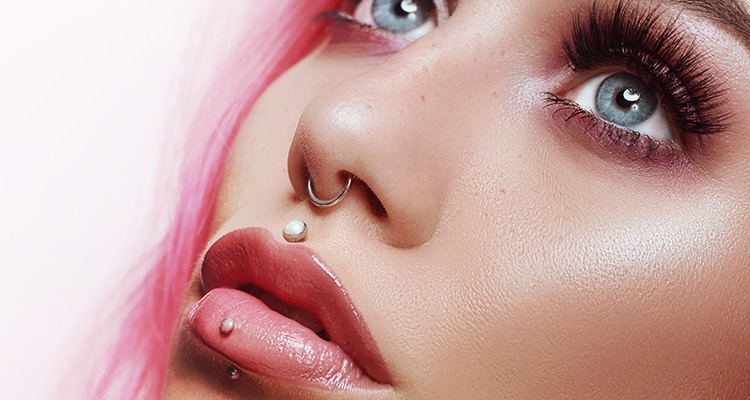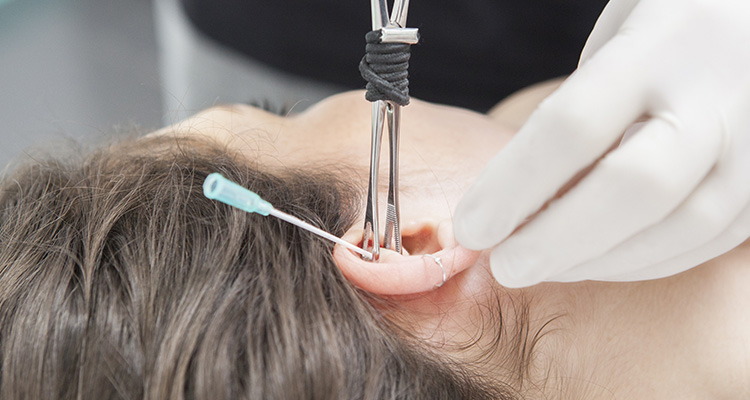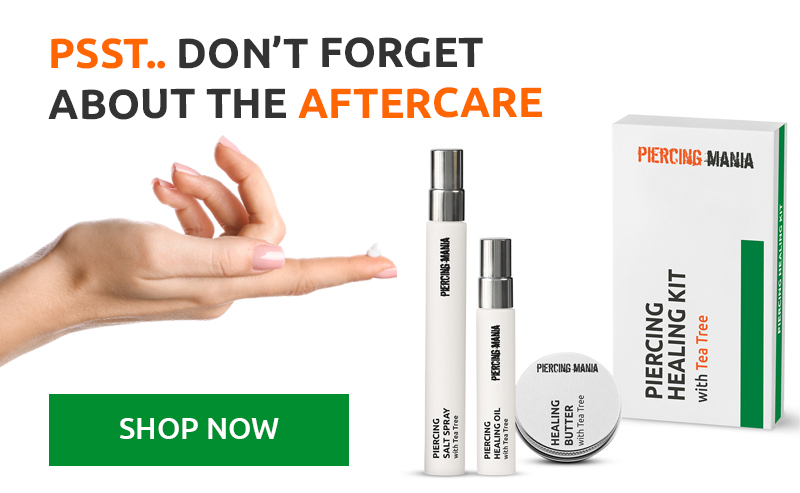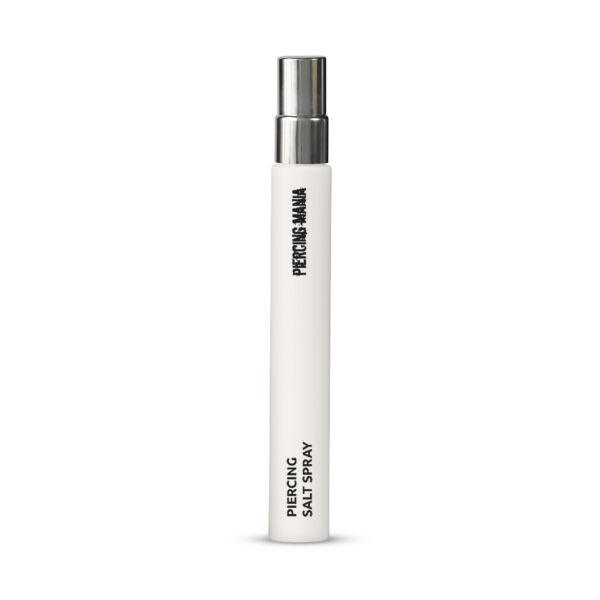Labret Piercings
Labret Piercing Shopping Guide
Labret piercings are one of the most popular piercing studs due to their simple, comfortable design. The labret is versatile and a perfect fit for many different piercings.
Labret studs have a flat back plate attached to the bar on one end, and a top that can be unscrewed on the other end. The tops range from plain balls to colourful crystals or pretty figurines.
In this shopping guide you can find information about the different types of labrets, as well as help with choosing the correct sizes and materials for your new labret piercing.
Jump to:
Labret Piercing Sizes
Labrets are often available in several thicknesses and lengths. The thickness and length you need for your specific piercing can differ from the standard sizes. The illustration shows how a labret piercing is measured.

If you are not sure what sizes you need, below is an overview of the standard or most common sizes for three popular piercing types.
Additionally, you can find a size guide on every product page throughout our webshop with detailed size information for every piercing.

Labrets can be used for most cartilage piercings.
Standard Sizes
Thickness 1.2 mm
Length 6 mm

Labrets are used for many different lip piercings.
Most Common Sizes
Thickness 1.2 mm
Length 8 - 10 mm

Different Types of Labrets
Labrets are available in different styles with various types of threading. Below you can find more information about the most common labret types.
There is also another labret type designed specifically for lip piercings, the lip loop. The looped part curves over the lip, while the straight bottom part goes through the piercing hole. The choice in designs is more limited, but it’s a classic look for a lip piercing.
Externally threaded labrets are considered standard type of labrets. The threading is on the outside of the bar, and inside the ball. They are best used on a fully healed piercing to avoid scraping a fresh piercing. For new piercings, we recommend an internally threaded labret.
With internally threaded labrets, the threading is attached to the ball and inside the bar. This can make it more smooth to put in, and the tops easier to screw on. If your piercing is not fully healed yet, an internally threaded labret might be a great choice for you.
Threadless labrets are unique, as they have no threading at all. The tops have a pin that needs to be bent inside the bar. By bending, the top stays securely in place. Specific instructions for this can be found on the product pages.
Push-fit labrets mostly come with a bioflex bar. The tops are often made of 14 kt. Gold or another metal. The pin of such labrets has small ridges that help them stay in place. Please note that push-fit labrets are known to have a less secure fit. Nonetheless, these are commonly used for lip piercings or sensitive cartilage piercings.
Labret Piercing Materials
When shopping for labret piercings, there is a variety of materials available. Here is a closer look at the most commonly used materials.
316L Surgical Steel
flip for more info
316L Surgical Steel
The number one material used. 316L surgical steel is a quality stainless steel that looks like silver. It contains small amounts of nickel and may be sensitive to discolouration.
Titanium
flip for more info
Titanium
There are plenty of titanium labrets in our collection. For a great quality labret piercing, go for implant grade titanium. Titanium is also nickel-free and won’t tarnish.
Bioflex
flip for more info
Bioflex
Most of our push-fit labrets are made of bioflex. It is extremely light and 100% nickel-free. It can be a bit fragile, but flexible.
14 Kt. Gold
flip for more info
14 Kt. Gold
The most luxurious of all. 14 kt. gold labrets are great for everyday wear as well as for special occasions. In combination with bioflex bars, they are more affordable and ideal for the lip.
Labret Piercing Aftercare
Good aftercare is the basis of a healthy piercing. A normal Salt Spray is good for keeping your piercing clean. When suffering from soreness or redness, use one of our products containing tea tree oil. A bit of tea tree oil can assist in fighting bacteria and soothe irritation. Avoid using disinfectants containing alcohol on or around the piercing wound, as it can dry the skin out and prolong the healing.
We also offer a Piercing Care Package with a selection of products to help with piercing bumps and irritated piercings.

Thinking about getting a new piercing?
Depending on the type of piercing you are getting, a labret piercing can be a perfect choice. Your local piercing artist can help you pick the best piercing type for your initial piercing during the healing period.
If you want to find some more information about getting pierced, you can read our article about the process first.

















